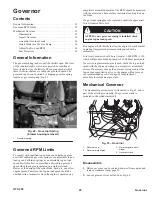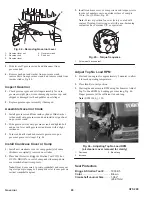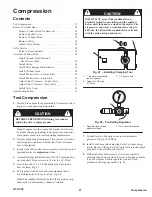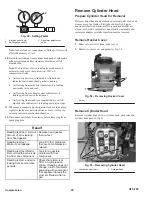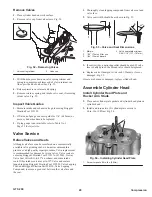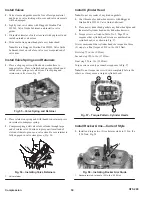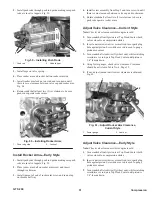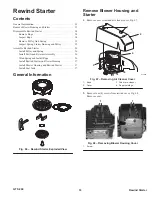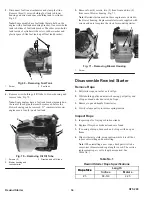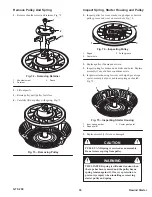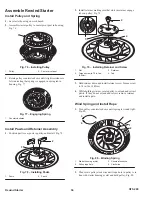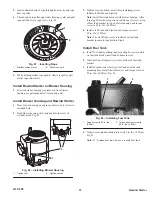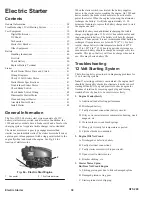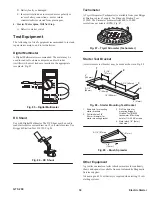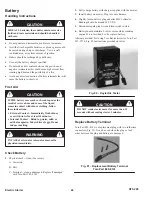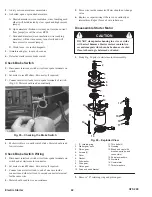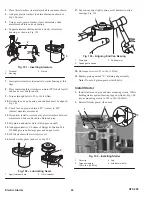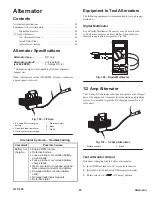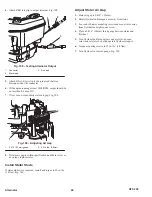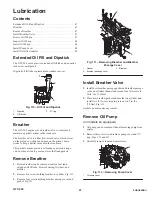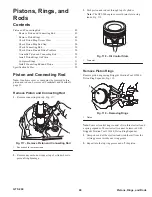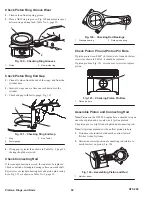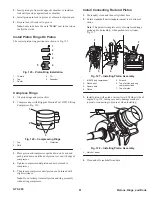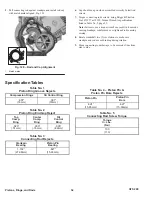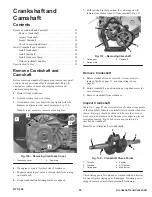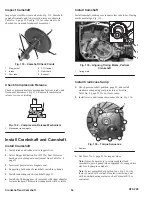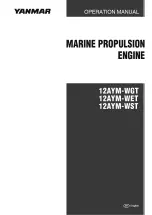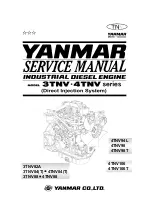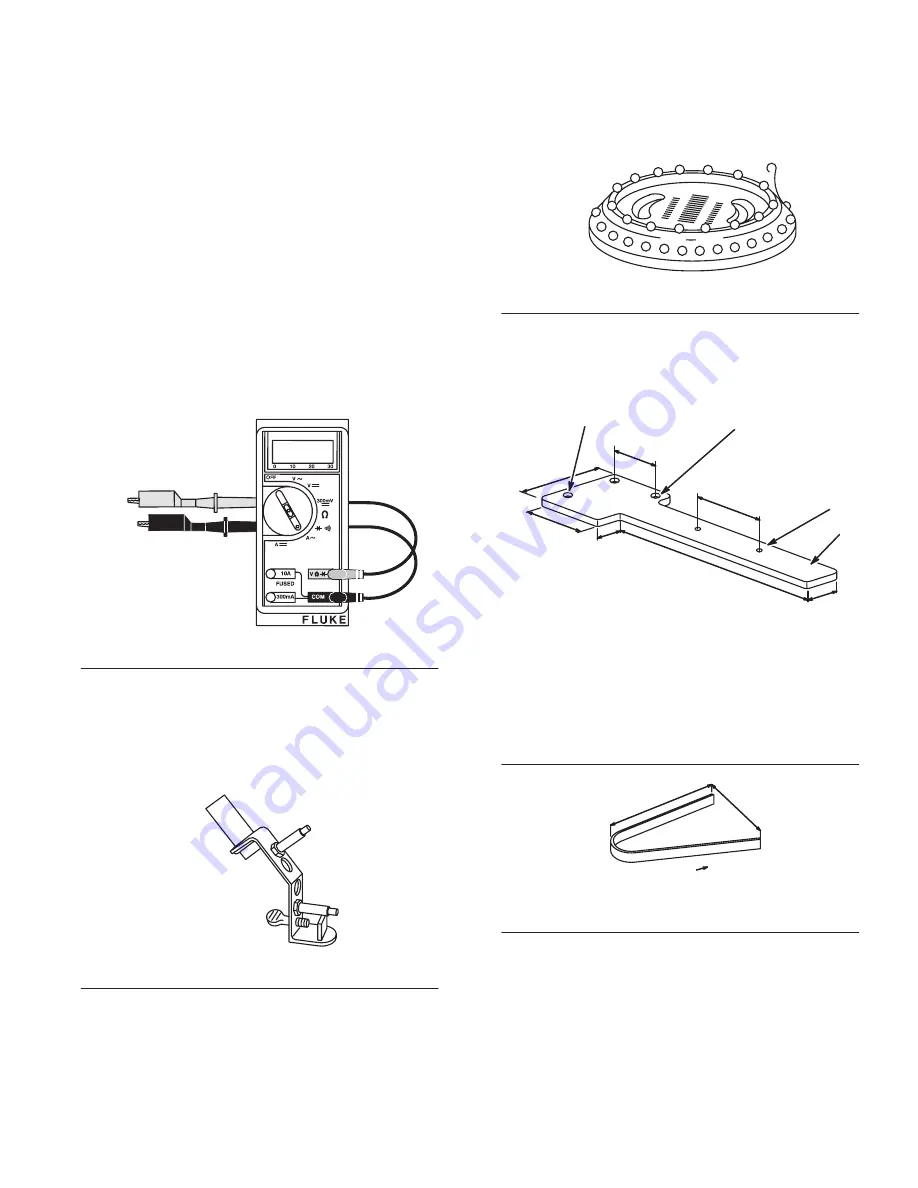
39
GTS 200
Electric Starter
D. Battery faulty or damaged.
E. Incorrect rotation due to reversed motor polarity or
reverse battery connections – motor rotates
counterclockwise viewed from pinion gear.
4. Starter Motor Spins, Will Not Stop
A. Defective starter switch.
Test Equipment
The following is a list of equipment recommended to test and
repair starter motors , and to test batteries.
Digital Multimeter
A Digital Multimeter is recommended. The meter may be
used to read volts, ohms or amperes, and test diodes
(rectifiers) when test leads are inserted in the appropriate
receptacle, Fig. 85.
Fig. 85 – Digital Multimeter
DC Shunt
Use with Digital Multimeter. The DC Shunt may be used to
read starter motor current draw on 12 volt starter motors. Use
Briggs & Stratton Tool #19359, Fig. 86.
Fig. 86 – DC Shunt
Tachometer
A Trysit Sirometer (Tachometer) is available from your Briggs
& Stratton source of supply. Use Briggs & Stratton Tool
#19200. The Sirometer measures from 800 to 25,000
revolutions per minute (RPM), Fig. 87.
Fig. 87 – Trysit Sirometer (Tachometer)
Starter Test Bracket
A starter motor test bracket may be made as shown in Fig. 88.
2–1/4”
(57mm)
3–1/2” (89mm)
2” (51mm)
10” (254mm)
1” (25mm)
3–1/2”
(89mm)
4”
(102mm)
1
2
3
4
Fig. 88 – Starter Mounting Test Bracket
1.
Extra hole for mounting
starter brackets
2.
Drill two holes 3/8”
(10mm) diameter for
starter mounting bracket
3.
Drill two holes for
mounting Briggs &
Stratton Tool #19200
tachometer #7 drill tap
hole for 1/4–20 NC screws
4.
Metal stock 1/4” (6mm)
thick steel
2” (51mm)
5/8”
(16mm)
2–1/4” (57mm)
Fig. 89 – Brush Spreader
Other Equipment
A growler or armature tester (checks armature for continuity,
shorts and opens) is available from an Automobile Diagnostic
Service supplier.
A known good 12 volt battery is required when testing 12 volt
starting systems.

